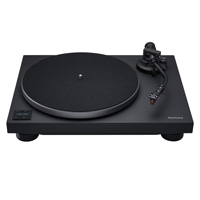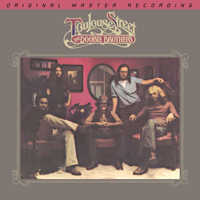Things Are Looking Up
Yesterday, I looked outside my front door and saw a box of toilet paper sitting on my steps. The way I reacted, you would have thought it was a Publishers Clearing House check. Our household normally receives a box every other month, but last month, it didn't arrive. I was well aware of the shortages and hoarding, and told my wife toilet paper was going to be accessible soon. I had to believe it. Most toilet paper is made in the good-old U.S. of A., so I was pretty sure we'd ultimately manage to produce enough to meet our needs.
I was right not to panic. Manufacturers found a way to satiate demand. I know it sounds silly, but it made me feel better. The last month has been extremely hard for Americans and the entire world, so I've learned to be happy for the little things. As we make plans on a state by state (or city by city) basis to reopen our economies, I am consoled by the fact progress is being made, even if it's something as simple as TP.
Yesterday, I crafted a great intro to the column. Today, it feels impossible to accomplish a sensible lead. That said, I want to introduce my friend, Brian Speiser, today's guest writer. I met him when he was in Chicago working for the Tedeschi Trucks Band tour. If you have not seen the group, check it out online. It's refreshing to meet anyone from the pro side of the music business that really understands what audiophiles are trying to accomplish. Brian has a great system at home, and he knows the importance of an all-analog signal chain – a concept he shares when he produces recordings or consults with other artists. Brian's partner is an amazing artist who has provided the artwork to accompany today's writing.
Today's Special Guest Contribution: Tom Waits Mule Variations
By Brian Speiser, Touring Audio Engineer/Analog Promoter/Proud New Yorker
"He gave her a dime-store watch and a ring made from a spoon.../Well go ahead and call the cops/You don't meet nice girls in coffee shops."
Artwork by Madalyn Stefanak, Instagram: @madalynillustration
Mule Variations has some of the most beautiful songs and haunting lyrics you'll find on a record. Songs like "Hold On," "House Where Nobody Lives," and "Picture in a Frame" tug on my heartstrings with every listen, and I could play any of them on repeat. The mental images conjured by the sounds and words on this album rival any I've heard.
It took some time for me to identify with Tom Waits' later records. My initial obsession was with his earlier (Bones Howe-produced) singer/songwriter-style music on which his melodies and lyrics always felt timeless. It wasn't until I listened to Mule Variations that the rest of his music suddenly made sense. It taught me how to listen deeper, beyond the dense sonic landscapes and his more gravelly, aggressive vocal style to uncover the equally beautiful melodies and lyrics that were, until then, hidden to me.
Much of the instrumentation on Mule Variations feels post-apocalyptic, which seems appropriate at this moment. Only a few songs have actual drums. Handheld percussion more often provides the rhythm, and much of it sounds like random objects being hit with a hammer, all the while woodwind horns supply short stabs to accent the notes of said objects. Marc Ribot's guitar feels like a musical power tool, and turntables play homemade sampled sounds to fill out the vibe. On top of all these sounds, Tom offers plenty of beautiful guitar and piano melodies to accompany his vocal melodies. He invites guests Les Claypool, John Hammond, Charlie Musselwhite, and others to join him on the album.
The recording itself is stunning. You can't help but feel like you're sitting in an old barn with Tom and the band. Tom was wise to include the following text on the record's back cover: "This LP recorded, mixed and mastered in analog." As a vinyl fanatic, such transparency brings me absolute joy when buying records. Unfortunately, unless you were lucky enough to purchase the original pressing or the 2010 Record Store Day reissue (the first of which is mastered and cut by Chris Bellman, the latter cut at the Mastering Lab) you might be listening to a cut sourced from digital files. Having listened to all three versions, nothing feels quite as good as the two AAA pressings.
Today, I'm listening to the 2010 Record Store Day reissue. The music is lovingly spread out over four sides of quiet, flat, and well-centered 180g vinyl. It also comes with a print of a great black-and-white photo of Tom taken by film director Jim Jarmusch. As I write, Ribot's guitar amp feels like it's right in the middle of my room while Tom stands above him crooning into what could be an old RCA ribbon mic, or a megaphone, or maybe even both. His janky piano sits in the corner of my room and the upright bass feels clear and powerful. Toward the end of the album, on "Take It with Me", it seems like Tom is standing right beside me.
The album finishes with another timeless song that today, as we quarantine and don't let anyone inside, feels bittersweet and ironic. Titled "Come on Up to the House," its lines resonate and provide an ideal close:
"Does life seem nasty brutish and short/Come on up to the house/The seas are stormy and you can't find no port/Come on up to the house."
21st Apr 2020



































